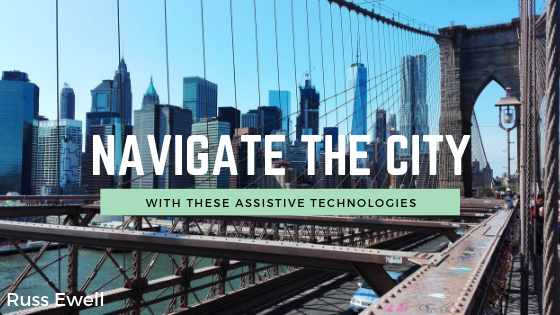Modern technology is empowering people to make simple changes to the way they live. For instance, voice-activated commands have become a common way for consumers to shop and self-driving cars are making their way into the general population. However, these innovations aren’t nearly as astonishing as the technology that’s empowering individuals with disabilities to live more efficient lifestyles – especially those who live in bustling cities.
It’s harder for people with disabilities to make trips outside of their homes. Consequently, the assistive technology business is a growing industry that’s set on changing the lives of people with disabilities by helping them get around their cities. This list gives a synopsis of the way technology is evolving to help the handicapped find accessibility in their cities.
- Walking Stick of the Future: Visual impairments make living in a crowded and busy city extremely difficult. Imagine moving along a busy intersection without relying on the use of eyesight for guidance. Engineers from Young Guru Academy (YGA) in Turkey have developed a smart walking stick – the WeWalk Stick. This technology uses voice navigation to guide the user. It’s integrated with Google maps to help the user with navigation, and it warns the user with vibrations when the stick is approaching objects above chest height
- Robotic Suit: A brilliant innovation in mobility is making marathon racing possible for people with disabilities. This exomuscular robotic suit has sensors that help control its movements and adds a layer of artificial muscle to support stability and mobility. A robotic suit sounds like it would weigh a ton, but this innovation weighs just 11 pounds.
- Wheelchair That Climbs: A new innovation in handicapped assistance is set to become available by the end of 2019 – the Scewo. For individuals living in or outside of the city who have a physical disability, stairs are an unavoidable obstacle. It’s hard to imagine staying on the ground level when there’s a horizon of sky rises. Luckily, developers of the wheelchair technology created a wheelchair capable of facing a variety of terrains, including stairs.
These machines and the technology that powers them have the ability to dramatically change the lives of individuals with physical disabilities. While these innovations are relatively expensive, this technology is just becoming available to the public and this growth will come to more affordable options for all. It is hopeful that this technology will continue to grow at this rapid pace and soon navigating a city with a physical disability will not be a daunting task.
